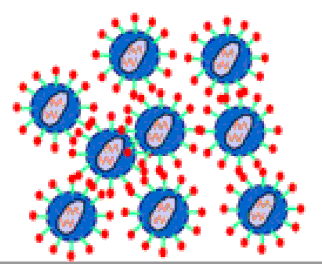Papers in the Biological Sciences

Qingsheng Li Publications
Document Type
Article
Date of this Version
1-14-2014
Citation
PNAS 111:2 (January 14,2014), pp. 769-774; doi: 10.1073/pnas.1321748111
Abstract
A unique avian-origin A/H7N9 influenza virus has so far caused 134 cases with 44 deaths. Probing the host factors contributing to disease severity, we found that lower levels of plasma inflammatory cytokines on hospital admission correlated with faster recovery in 18 patients with A/H7N9 influenza virus, whereas high concentrations of (in particular) IL-6, IL-8, and macrophage inflammatory protein-1β were predictive of a less favorable or fatal outcome. Analysis of bronchoalveolar lavage samples showed up to 1,000-fold greater cytokine/chemokine levels relative to plasma. Furthermore, patients with the rs12252-C/C IFN-induced transmembrane protein-3 (IFITM3) genotype had more rapid disease progression and were less likely to survive. Compared with patients with the rs12252-T/T or rs12252-T/C genotype of IFITM3, patients with the C/C genotype had a shorter time from disease onset to the time point when they sought medical aid (hospital admission or antiviral therapy) and a shorter interval to development of the acute respiratory distress syndrome stage (reflected by shorter intervals between clinical onset and methylprednisolone treatments and higher rates of mechanical ventilator use), as well as experiencing elevated/prolonged lung virus titers and cytokine production and higher mortality. The present analysis provides reported data on the H7N9 influenza-induced “cytokine storm” at the site of infection in humans and identifies the rs12252-C genotype that compromises IFITM3 function as a primary genetic correlate of severe H7N9 pneumonia. Together with rs12252 sequencing, early monitoring of plasma cytokines is thus of prognostic value for the treatment and management of severe influenza pneumonia.


Comments
Copyright © 2014 NAS. Used by permission.